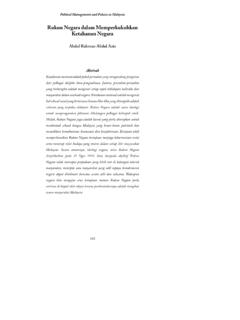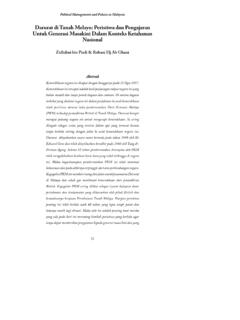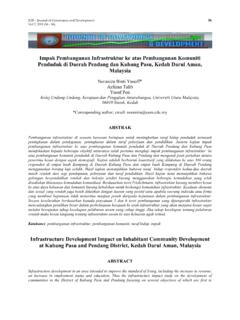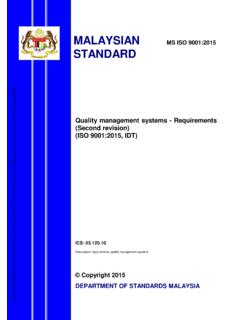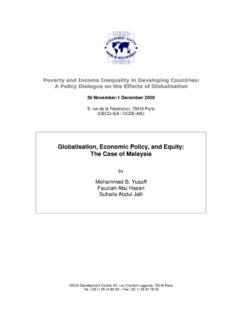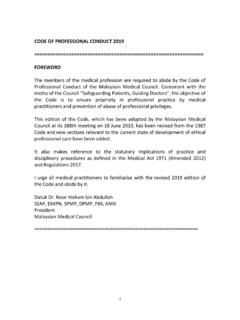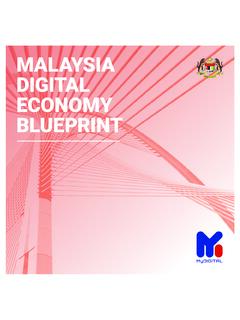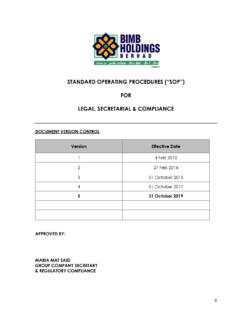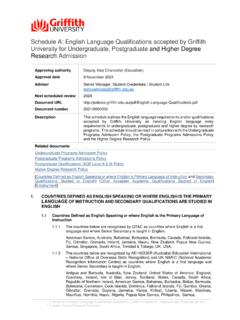Transcription of Knowledge and the Importance of Knowledge Sharing in ...
1 349 Knowledge and the Importance of Knowledge Sharing in Organizations Faizuniah Pangil School of Business Management Universiti Utara Malaysia Kedah, Malaysia Aizzat Mohd Nasurddin School of Management Universiti Sains Malaysia Penang, Malaysia ABSTRACT The purpose of this paper is to discuss Knowledge and the Importance of Knowledge Sharing in organizations. Hence, this paper discusses in detail the different types of Knowledge that are important in organizations and the definition of Knowledge Sharing . Besides that, this paper also details out the benefits of Knowledge Sharing in organizations and various factors that could influence Knowledge Sharing in organizations.
2 1. INTRODUCTION The ability of organizations and individuals within them to share Knowledge with each other, particularly organizational Knowledge , is identified as one of the contributing factors to organizational competitiveness. Sharing of Knowledge helps individuals and organizations build up Knowledge . This is because it allows them to discuss and deliberate on certain topics which can encourage the generation of new Knowledge (Fernie, et al., 2003). Despite the Importance of Knowledge Sharing in building up a firm s organizational Knowledge , which eventually improves the firm s competitive edge, there are reasons to believe that employees are not willing to share their Knowledge voluntarily.
3 For example a study by Michailova and Husted (2003) revealed that there are five reasons why employees are reluctant to share Knowledge . The reasons includes (i) the fear of decrease personal value, (ii) cost involved, (iii) uncertainty of how the receiver will use the shared Knowledge , (iv) accepting and respecting a strong hierarchical and formal power, and (v) actual negative consequences of Sharing Knowledge with subordinates. Although this study was conducted in Russia, a country where the authors themselves describes as hostile to Knowledge Sharing , it is quite relevant in other parts of the world.
4 This is because it seems that the reluctance to share Knowledge is also occurring elsewhere such as in Australia (Irmer, Bordia & Abusah, 2002), China (Hutchings & Michailova, 2004), Taiwan (Wang, 2004) and the United States of America (Jones & Price, 2004). Based on these findings one could expect this phenomenon to prevail in Malaysia given its cultural values concerning humility (Abdullah & Low, 2001). Still, Hofstede s (1983) study indicated that the malaysian society is collectivistic in nature. In such a society, Knowledge Sharing should happen naturally because it is the tendency of a collectivistic society to help each other.
5 Abdullah and Low (2001), on the other hand, 350 maintained that the malaysian workplace is characterized with unique values and work culture. The Malaysians are often considered as very shy people and are very concern about saving face , or should we say afraid of losing face . Most of us are afraid of making mistakes and receiving negative feedback, even though we are not sure that we will be getting one. Furthermore, the idea of giving and receiving praise also makes some of us feel ill at ease. Therefore, when it comes to Sharing Knowledge , some of us can be quite reserve in expressing our ideas and opinions, much less voluntarily offering our Knowledge to other people.
6 Besides, there are other countries which are also considered as having a collectivistic culture but having problems where Knowledge Sharing is concerned, for example China (Hutchings & Michailova, 2004). Hence it is the objective of this paper to discuss Knowledge Sharing and the Importance of Knowledge Sharing within an organization. 2. Knowledge AND TYPES OF Knowledge Knowledge is not an easy concept to discuss. In order to understand what Knowledge is, it is important to understand how it relates to data and information. In general, past literatures have identified the distinctions between data, information, and Knowledge .
7 Data is commonly described as a set of discrete, objective facts about events; while information is a collection of data and associated explanations, interpretations, and other textual material concerning a particular object, event, or process. Knowledge on the other hand, is a more complex concept to define. Bergeron (2003) defined it as information that is organized, synthesized or summarized to enhance comprehension, awareness, or understanding. Similarly, Karlsen and Gottschalk (2004) defined Knowledge as information combined with experience, context, interpretation, reflection, intuition and creativity. Likewise, Davenport and Prusak (1998) sees it as: a fluid mix of framed experience, values, contextual information, and expert insight that provides framework for evaluating and incorporating new experiences and information.
8 It originates and is applied in the minds of knowers. In organizations, it often becomes embedded not only in documents or repositories but also in organizational routines, processes, practices, and norms. (p. 5) In short, Knowledge by far is more comprehensive and more valuable compared to information and data. It is mainly attached to the individual who owns and uses it, and manifests itself in many different ways. For example, we can see Knowledge at work by the way people make decisions, by a certain peculiar way people do their jobs, and through people s creativity in completing their work.
9 There are several ways in which Knowledge is categorized. For example, Knowledge can be categorized into declarative and procedural Knowledge . Declarative Knowledge is basically the knowing that type of Knowledge which relates to factual information, while procedural Knowledge is the knowing how type of Knowledge which concerns the process underlying actions (Leach, Wall & Jackson, 2003). However, most literatures categorize Knowledge into two major forms; tacit and explicit (Nonaka & Takeuchi, 1995). Nevertheless, there are others who identified a third form of Knowledge known as implicit Knowledge (Bergeron, 2003).
10 According to Bergeron (2003), explicit Knowledge is the type that can be easily explained and codified, and are available in books, manuals and other types of publications. Tacit Knowledge , on the other hand, is the type that is difficult to verbalize and codify because it is ingrained at a subconscious level. Implicit Knowledge is the type of Knowledge that is somewhere between tacit and explicit. Like tacit Knowledge , implicit Knowledge exists at the subconscious level, but it can be extracted through the process of Knowledge engineering (Bergeron, 2003). Despite this distinction, most discussions focus on tacit and explicit Knowledge only because most of the time, implicit Knowledge is treated as explicit Knowledge due to its codifiable nature.

